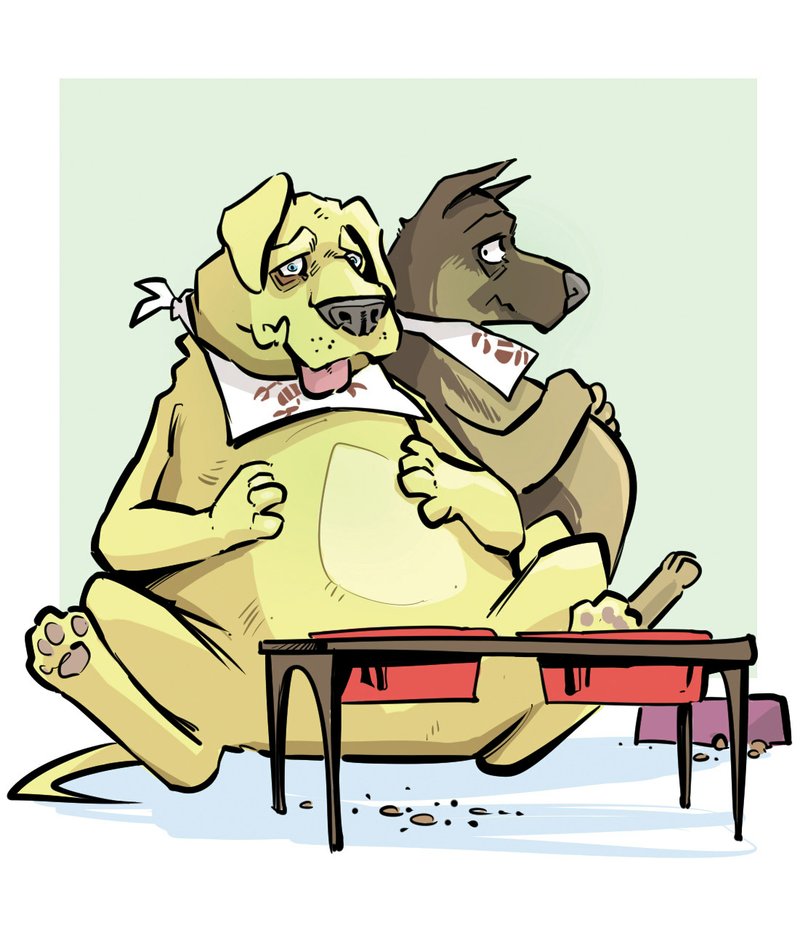For years now, I have used raised bowls for my dogs' food and water because I heard this decreases the risk of bloat. Last week, I read that using these raised bowls increases the risk of dogs getting bloat. I'm confused! Can you tell me which is correct? I want what's best for my babies.
You're not alone in feeling confused. What causes bloat and how to prevent it confounds even veterinarians and scientists who dedicate their lives to researching ways to improve the health and well-being of pets.
What experts know for certain is that some breeds of dogs are predisposed to the life-threatening condition in which the stomach swells with gas and then twists, says veterinary nutritionist Cailin Heinze of the Cummings School of Veterinary Medicine at Tufts University. Dogs most at risk for experiencing bloat -- known in medical terms as gastric dilation and volvulus -- are those with deep, narrow chests such German shepherds, Great Danes and Labrador retrievers. Other breeds in that category include Saint Bernards and standard poodles. While bloat can occur in smaller dogs, Heinze says, it's rare.
Researchers have conducted many studies seeking to identify causes and risk factors in hopes of finding something that might prevent bloat from occurring, but none of the studies have resulted in definitive answers, Heinze says.
"The problem with those studies is they all have some pretty big flaws," she says.
A key flaw lies in assumptions about associations and causations, she says. To put that in layman's terms, Heinze says to imagine a study that concludes blond women are more likely than other people to wear pink. That conclusion might be linked to the fact that the blondes in the research group were members of the same sorority so they were all wearing the sorority's signature color, which was pink. Based on that, researchers made the blonde-pink association although the choice of pink had nothing to do with the women's hair color.
How that scenario relates to assumptions about bloat actually begins at the point when elevated dishes were recommended as a way to prevent bloat. That probably coincides with the first article you read about the issue. Heinze explains that owners concerned about bloat likely began feeding their at-risk dogs from raised dishes; at some point later, a study including these dogs revealed an association between bloat and the elevated bowls.
"You read all kinds of information that makes you question what you are doing because the honest truth is we don't know that those associations are true," Heinze says.
She notes any link between bloat and raised dishes could simply be attributed to the fact that because owners of dogs at a higher risk for bloat fed their dogs in raised dishes, when one or more of those dogs suffered bloat, researchers attributed the condition to use of the dish.
"I don't think we have good data to suggest that using raised dishes prevents bloat and I don't think we have good data to suggest that it causes bloat," Heinze says. Studies also don't reveal any link between a dog's diet and bloat, but there is evidence that feeding dogs several small meals instead of one large meal can be a positive measure.
"Also, slowing down their eating may be helpful," Heinze adds. "Dogs that eat very quickly tend to swallow a lot of air." She suggests owners concerned about bloat feed their dogs with a food-dispensing toy or a "slow-feed" bowl configured with raised ridges or indentations that make it difficult for a dog to gulp his food.
Sometimes owners of large-breed dogs opt to not take a chance on bloat occurring and have their dogs undergo preventive surgery in which the stomach is attached to the body wall, Heinze says. The procedure, gastropexy, is typically done as a treatment after a dog experiences bloat. In fact, surgery to untwist the stomach and keep it from twisting again is the sole treatment for bloat.
"It's a scary disease and a surgical emergency, and some dogs don't make it to surgery," Heinze says.
Any symptoms require an immediate trip to a veterinary clinic. Signs include the dog acting uncomfortable and anxious, a distended stomach, unproductive retching, pale gums, drooling, weakness and collapse.
"The hard thing is deciding if he ate too much and isn't feeling well or if it's life-threatening," Heinze says. "It's better to err on the side of [caution and], taking the dog in and it being nothing, than waiting and it being unrepairable."
Family on 05/03/2017
